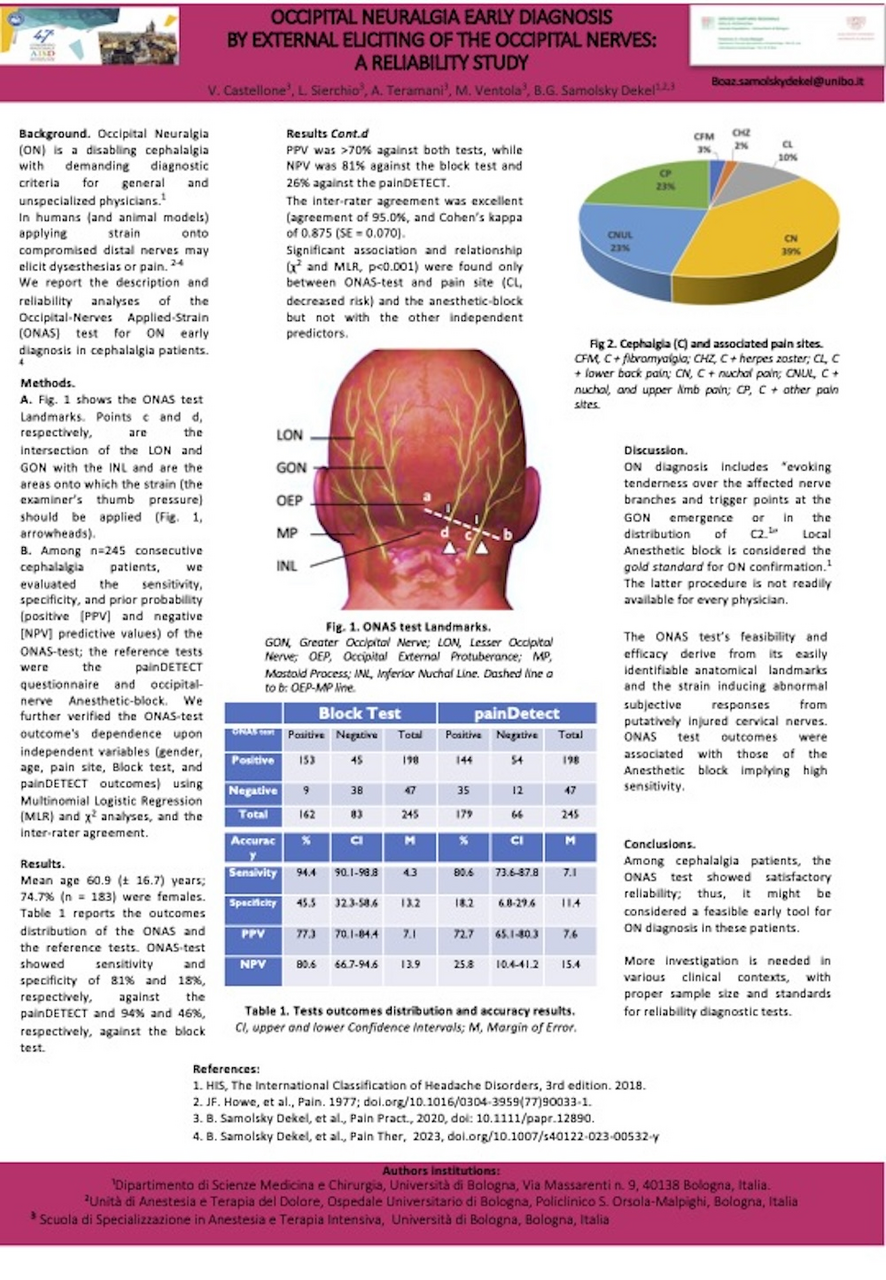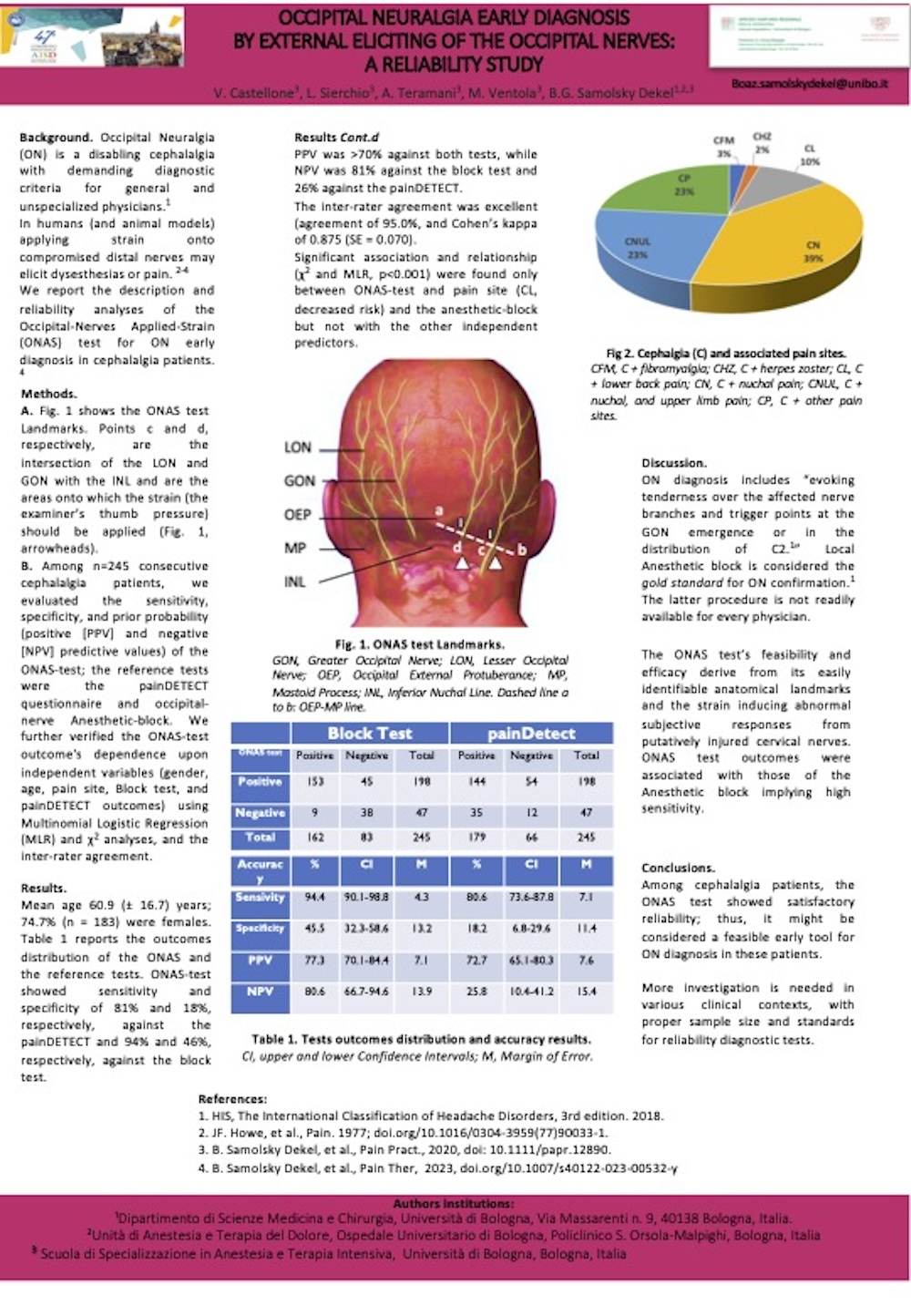Abstract
Introduction
Occipital neuralgia (ON) is a disabling chronic cephalalgia condition arising from injured occipital nerves. Its diagnosis is challenging and requires specific diagnostic procedures. We proposed the Occipital Nerves Applied-Strain (ONAS) test for early clinical diagnosis of ON in cephalalgia patients. This study reports the ONAS-test reliability features: sensitivity, specificity and prior probability (positive predictive values [PPV] and negative [NPV] ones.
Methods
N=245 consecutive cephalalgia patients underwent the ONAS test. First, we compared the latter outcomes against the outcomes of two known neuropathic pain and ON diagnostic reference tools: the painDETECT (PD) questionnaire and the occipital nerve anesthetic block. Second, we assessed the ONAS test outcomes' dependence upon independent variables (sex, age, pain location, block test, and PD results) using multinomial logistic regression and χ2 analyses and, finally, inter-rater agreement.
Results
Compared to the PD, the ONAS test showed high sensitivity (81%) and low specificity (18%); compared to the block test, it showed high sensitivity (94%) and intermediate specificity (46%). The PPV was >70% against both tests, while the NPV was 26% against the PD and 81% against the block test. The inter-rater agreement was excellent. Significant associations and relationships were found only with pain sites.
Discussion
ON diagnosis includes evoking tenderness over the affected occipital nerve branches and local trigger points at their emergence or in the scalp C2 distribution. Local Anesthetic block, not readily available for every physician, is the gold standard for ON confirmation.1
The ONAS test’s feasibility and efficacy derive from its easily identifiable anatomical landmarks; the applied strain induces abnormal subjective responses from putatively injured cervical nerves. ONAS test outcomes were associated with those of the Anesthetic block implying high sensitivity.
Conclusion
The ONAS test showed satisfactory reliability among cephalgia patients. Thus, it may be considered an easy and reliable clinical tool for early ON diagnosis in any clinical setting.
References
1. HIS, The International Classification of Headache Disorders, 3rd edition. 2018.
2. JF. Howe, et al., Pain. 1977; Mechanosensitivity of dorsal root ganglia and chronically injured axons: A physiological basis for the radicular pain of nerve root compression.
3. B. Samolsky Dekel, et al., Pain Pract., 2020 Reliability of the Buttock Applied Strain Test to Diagnose Radicular Pain in Patients With Low Back Pain
4. B. Samolsky Dekel, et al., Pain Ther, 2023, The Occipital Nerves Applied Strain Test to Support Occipital Neuralgia Diagnosis






